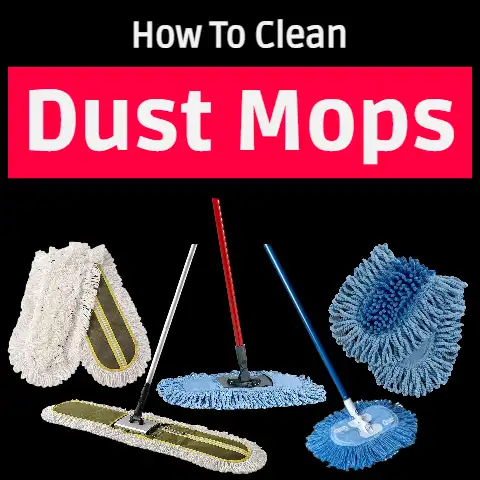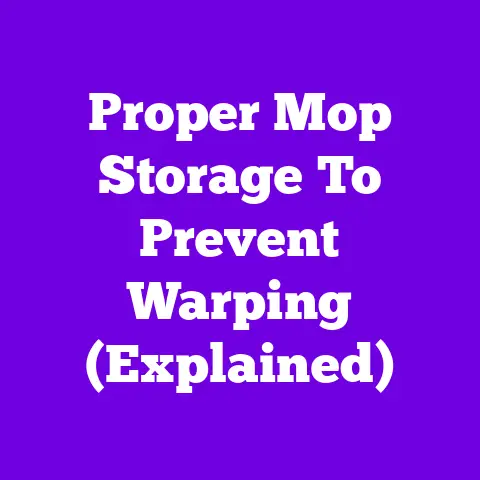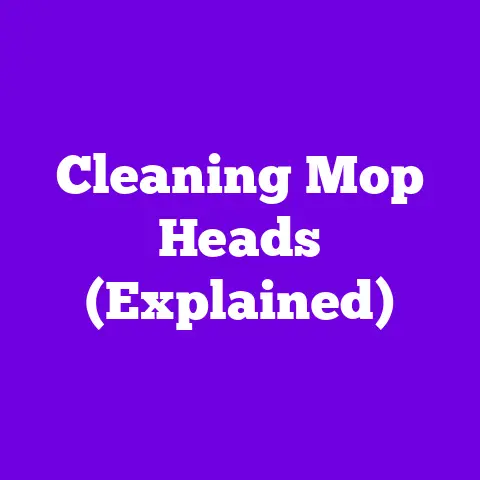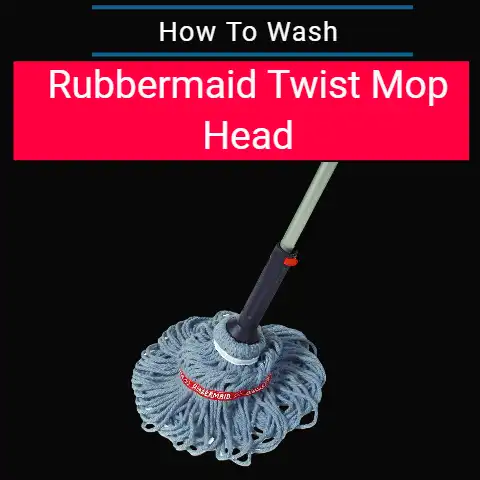How To Clean A Stinky/Smelly Mop (Revive Mop’s Freshness)
To remove odors from a stinky mop, you can use vinegar, baking soda, bleach, laundry detergent, or dishwashing liquid. Soak the mop head in the chosen solution for 15 minutes, rinse thoroughly with clean water, and let it air dry before reuse.
Nothing feels and smells better than a clean home. But nothing is great about the smelly mop you have afterward.
Mops naturally retain moisture which is why we use them.
But if they are not cleaned properly, they will become moldy and have mildew growth.
Mold and mildew will cause an unsafe home and smelly home.
Let’s dive into a 4-step solution to explain how easy it is to keep your mop smelling fresh.
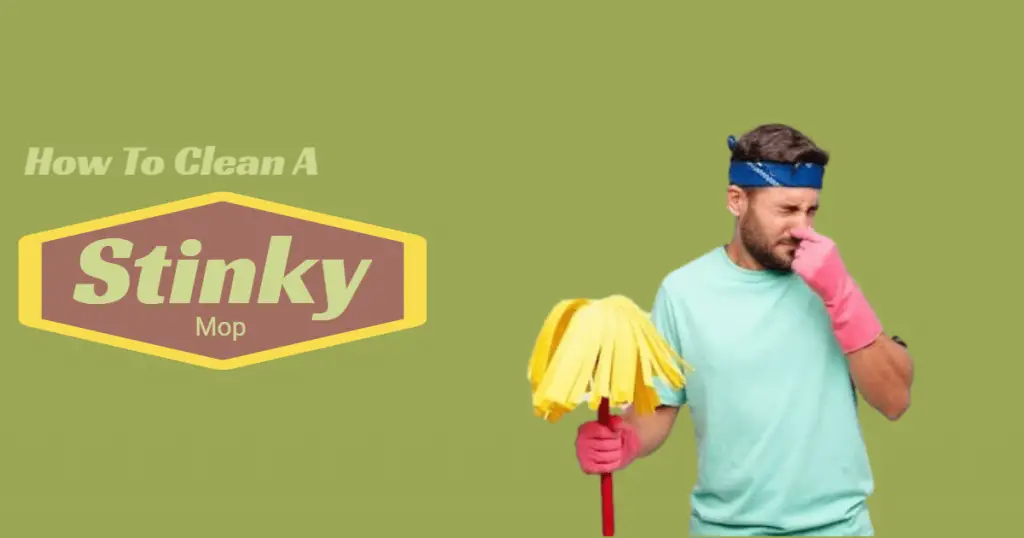
5 Methods to Clean Stinky Mops
Since the dawn of time people have been using mops to clean.
The mop usually consists of a rectangle-shaped rag that is soaked in water or cleaning solution and then wrung out so it is damp but not dripping wet.
A mop’s job is to absorb dirt and grime from surfaces, but if not properly cared for it will start to smell bad.
That may sound odd because you are washing it after every use, but the cloth can still get dirty.
Here are 5 methods To clean stinky mops.
1st Method (The casual process)
Step one: Initial Rinse & Inspection
If you are just wrapping up a mop session and you notice an instant funky smell.
A good start is to rinse out the mop bucket to get it clean. If the smell is still hanging around then we know for sure it is the mop.
Start with running hot water through your mop. Inspect the mop for any new stains. Apply a mild detergent to get out any fresh stains in your mop.
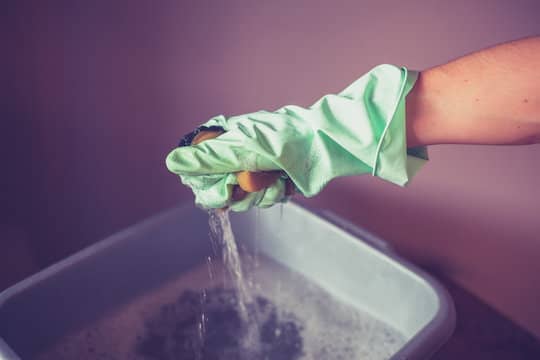
The detergent will break down the substance of the stain, leaving you with a cleaner mop.
If the mop has threads spread them out to ensure the water is getting into the middle of the mop.
The dirtiest part of the mop is the center of the mop head, unfortunately, it is also the hardest part to clean.
Remember this is only for spot treatment.
Do not douse your whole mop head in detergent. It will add a lot of time to your cleaning. You can also try to clean the whole mops or disinfect them if needed.
Step Two: Second Rinse
Rinse your mop out of any soap. Soap or commercial cleaning products will leave an oily residue in your mop.
This will cause your fibers to “clog” up. The cleaners will also cause your mop to retain moisture.
Which is not what we want when we are cleaning and drying the mop! Wringing your mop out will make step number 3 go a little quicker.
If you do not think you got all of the cleaners out then do a quick vinegar or bleach rinse. This will remove any remaining residue.
Step Three: Drying the Mop
Let your mop airdry or sunbake. Air circulation is critical in drying your mop and having it smell-free.
If it’s a rainy day or you don’t have outdoor access. Hang your mop over your shower or bathtub.
This will allow the mop to drip dry in an area that won’t cause any water damage.
Placing your mop on your deck is one of the best ways to ensure a dry, smell-free mop.
The sun will not only dry it quickly but the sun is a natural disinfectant. This should reduce any initial smells along with killing any bacteria.
The natural sunlight will also “bleach” and brighten your mop head. Reducing any old or new stains.
Step Four: Storing Your Mop
This step may seem self-explanatory. However, make sure you store your mop appropriately. Hang it up completely off the ground.
If you leave your mop head touching the ground you take a chance of not allowing airflow to circulate through the mop.
Make sure your mop’s head is not touching the ground where there is more potential dirt or moisture.
No matter how well we clean our floors we run the risk of cross-contaminating the mop head that we just worked so hard to clean.
2nd Method (The Deep Cleaning process)
If you pull your mop out of the storage closet and notice a smell there. Start smelly recon immediately, before cleaning your floors.
Cleaning your floors with a mildew-smelling mop will give you a mildew-smelling floor. You are giving the mildew moisture and a new place to grow.
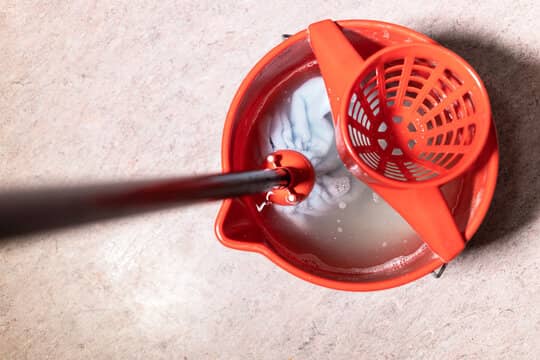
To deep clean, your mop, make a cleaning solution of 1 cup cleaning bleach along with 1 gallon of water that is 120 degrees Fahrenheit or warmer.
Soak your mop for several minutes. Wring it out into a sink.
Place your mop back into the cleaning solution. While it is soaking be sure to “agitate” or “swish” the mop around to make sure all the fibers are being worked.
The bleach will kill 99% of all germs and mold.
The purpose of soaking and agitating the mop is to extract any potential mold. Repeat this step as many times as you believe is necessary.
3rd method (Using Homemade Cleaning Mixtures)
1 Cup of vinegar to 1 gallon of water.
1 Cup of 3% Hydrogen Peroxide to 1 gallon of water.
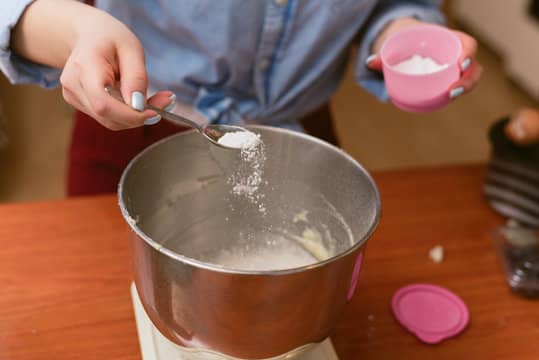
If you want to stay on the more natural side of cleaning. Cleaning Vinegar is the best option.
Cleaning vinegar is more acidic than distilled white vinegar.
If you are mixing up a natural cleaner, feel free to include a few drops of Tea Tree essential oil in your vinegar mixture.
Tea Tree is another natural disinfectant. Always use water that is 120-degree Fahrenheit or warmer.
4th Method (using Natural Cleaners)
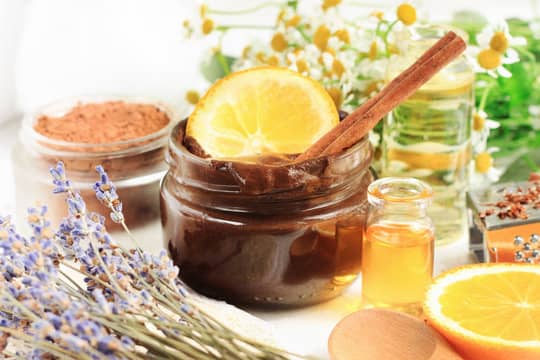
You can use the below products for better cleaning.
- Borax
- Castile Soap
- Baking Soda
- Epsom Salt
- Vinegar
- Lemon
5th Method (Cleaning Hard Water Stains)
Hard water stains are unsightly, and when they accumulate on your hardwood floors, it’s hard to avoid.
But when the tough saltwater combines with the wet mop you use to clean floors, it can lead to a stinky situation!
Hard water is a scourge for anyone with an old, stinky mop. The stains from hard water can be removed from a mop with the following steps: Scrub the head of the mop to remove any excess buildup, spray vinegar on the head and leave it for 10 minutes, wash off the vinegar with soap and water, and finally soak the head in alcohol overnight.
Get rid of those stubborn water stains from a mop so that you can have a better smelling environment.
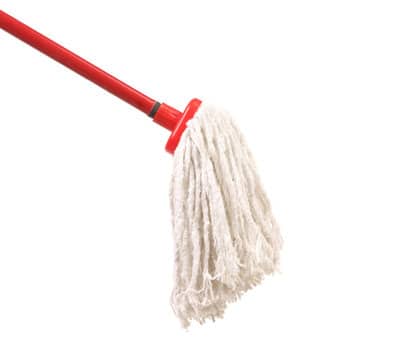
6th Method (Cleaning a Stinky Mophead)
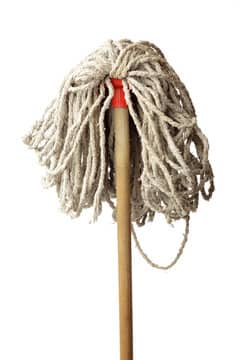
- Fill the bucket with water
- Add a few drops of dish soap
- Wet your mop head
- Scrub the head with the sponge
- Rinse off any excess soap with fresh water
7th Method (Drying Out the Mophead)
After washing your mop head, hang it upside down from a hook above a towel rack. This allows airflow throughout the entire room.
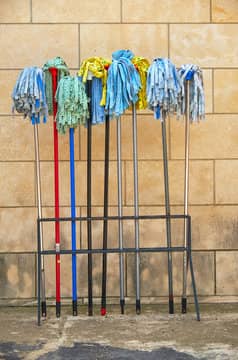
Letting the mop sit overnight dries it out even further.
You can also put the mop head outside if you have access to direct sunlight.
What Causes Mops to Smell Bad?
Mops are one of the many items in the house that need to be cleaned regularly. But what causes them to smell so bad?
It is a well-known fact that mops tend to smell bad after a period of use. There are a few reasons for this, which we will explore below.

Most people have no idea why their mop smells so bad and may think it’s just buildup from the floor, but there are different sources of odor depending on the situation.
Well, for starters, they are often used on wet surfaces where bacteria can grow quickly.
The bacteria growth leads to odors, and in some cases, health issues can also result.
They may also become infested with mites, which feed on organic matter and can cause them to smell bad.
How to Clean Smell from Mop
If you find after ensuring you’ve done the cleaning steps, along with several deep cleans and your mop is still holding onto its ghastly smell.
It is time to throw the mop head out.
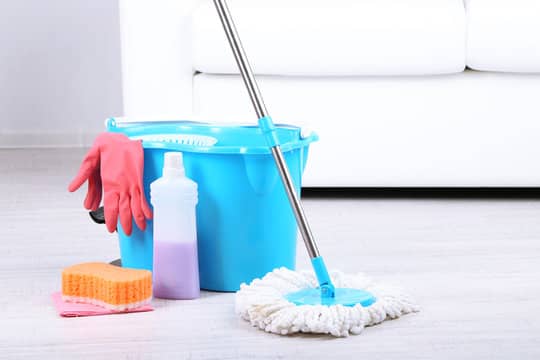
If the mop head is still relatively new, try to find out why it is keeping a smell.
Check out where you store your mop. Is there water leaking? Is it jammed next to other fabrics while it is being stored?
Tips for cleaning sticky mops
#1
You can use a washing machine to wash your mop, but they won’t remove the stains and they won’t be very effective.
#2
Warm water is the best way to clean a mop.
The mop head should be immersed in warm water and then agitated while rubbing against a hard surface to remove dirt.
If your mop is getting dirty, you need to soak it again with warm water and agitate it with a washcloth.
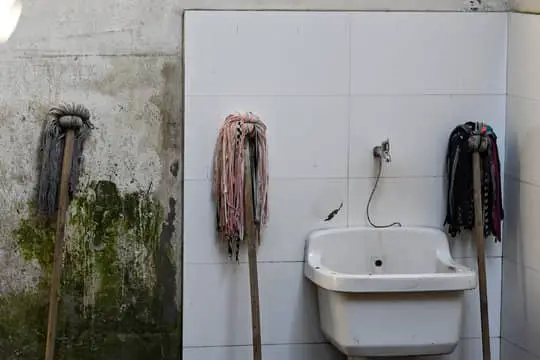
#3
Clean water is needed to keep the mop clean and also prevent mold growth.
The most important thing to remember when using a mop is that you need to be sure that you are getting rid of all of the excess water.
If not, the rag can start to mold or get slimy and nasty.
#4
Hardwood floors or tile flooring can accumulate a lot of grime over time, even if you wash your mop after each use.
The best way to prevent this is to keep your mop properly clean and sanitized at all times.
If you don’t do this the mop will quickly become an unsightly mess. It will attract dirt and grime, and in time will take on the color of your floor.
#5
Mopping with vinegar is one way to keep your mop smelling fresh.
#6
Laundry detergent is typically used on clothes. You may use a dishwashing liquid on a mop for cleaning it.
You may also add essential oils to your mop to create a pleasant scent.
How to Know if your mop is clean?
Here is a quick test you can do to check how clean your mop is. simply pour a glass of water on your mop and then set a coin on top of the water.
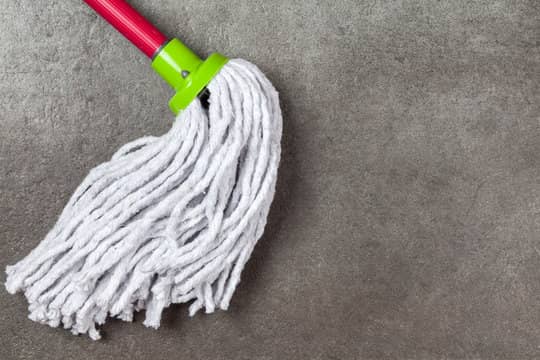
If the coin gets clean then your mop is clean. But if the coin continues to remain dirty even after the water dries up.
That means your mop is not as clean as it should be.
So keep moping your floor, and if it’s not clean after a few mops your mop is dirty. You should throw it out and buy a new one.
Final Words
Before putting your mop into storage, the mop must be 100% dry. It is critical to the cleanliness of your mop.
Unwanted moisture is the number 1 culprit of a smelly mop.
Having a smelly mop is always a little nerve-wracking. It will leave you thinking about how and why does it smell the way it does.
But if you follow these steps you can see how easy it is to ensure a smell-free mop every time.

